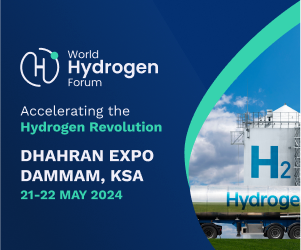Investing towards net zero
- 1 year, 7 months ago (2022-09-21)
- Junior Isles

By Jonathan Hick

World Hydrogen Forum 2024
The United Kingdom emitted 405.5 million tonnes of CO2 in 2020, with more than 20% produced by the energy sector alone. [1] Although as a nation we have drastically reduced our overall greenhouse gas (GHG) emissions in the last thirty years, [i] our demand for energy, specifically electricity, is increasing, estimated to triple by 2050. [2] The International Energy Agency (IEA) has advised that the radical transformation of global energy systems required to achieve net zero CO2 emissions is dependent on a major expansion in the volume of investment and a major pivot in where that investment is deployed , with a core focus of this being clean and energy efficient technologies. [3]
With the UK committed to achieving net zero in just a matter of decades, the British Government has declared that the energy sector is to be decarbonised by 2035, 15 years ahead of the wider economy, in 2050. [4] Considerable, sustained, and balanced investment is needed across all aspects of the energy system if we are to achieve this and meet the agreed targets set at COP26.
If recent record-breaking heatwaves across Europe as well as China are demonstrative of the warming of our planet, vindicating those climate scientists whose warnings of increasingly volatile weather have now manifested, then abatement efforts must increase, rapidly. It will fall primarily to the private sector to provide the investment and innovation needed to drive this forward.
Road to net zero: wholescale capital investment
By current estimates, annual investment in energy production alone will need to rise from the current $2 trillion per annum (on average, over the last five years), to ~$5 trillion in 2030, and then pull back slightly to $4.5 trillion in 2050, with total capital investment in net zero emissions as a percentage of GDP to rise from the current ~2.5% to as high as 4.5% in 2030. [5]
The UN’s Net Zero Financing Roadmap , produced in tandem with COP26 and in line with the IEA’s decarbonisation roadmap, proposes that between 2021 and 2030, [ii] ~$32 trillion investment is needed to put the world on the path to net zero. These are clearly substantial figures. [6] Furthermore, 70% of the financing required will need to come from the private sector, through direct net zero investment and investment in corporate decarbonisation investments. [7]
Diversified, holistic approach
Of crucial importance here is not just the value of the capital needed, in the trillions of dollars, but the destination of that deployed investment and subsequent development. A balanced, holistic approach, as illustrated by TENT’s investment strategy, is critical to ensure a smooth transition and manage energy security in the medium to long term.
We cannot reduce emissions to net zero by only developing one aspect of the energy system. For all the low carbon benefits of state-of-the-art solar technology and vast offshore windfarms, without efficient transmission to reduce energy loss and adequate storage to account for weather variability, we won’t provide for our energy needs. Without reducing consumption requirements in residential, commercial, or industrial settings, by deploying efficiency measures and carbon capture technology, our electricity demands will remain too high. The system is symbiotic, and so investment must reflect this.
The IEA’s roadmap broadly segments this across a number of crucial pillars: renewable and low carbon energy generation; energy efficiency through storage and improved transmission; and reduced consumption through on-site efficiencies, behavioural change and carbon capture and utilization. This should be reflected in any energy transition strategy, as it is in our own, and in our portfolio.
How does this look in practice? Firstly, we must continue to rapidly develop decentralised, low carbon energy generation built on 100% renewables, ideally located as close as possible to centres of demand, such as hydroelectric power and solar.
Secondly, between generation and consumption, we need to invest in adequate distribution and storage, which will be needed to balance often volatile and unpredictable supply. Last year, enough energy to power almost one million homes for a year, generated from wind, was simply lost though inefficiencies in the system, at a cost of £507 million, according to consultancy LCP. [8]
Thirdly, we need to reduce demand from the grid network from the consumer, be this in a residential, commercial, or industrial setting. This can be achieved through energy saving measures, such as low energy LED lighting systems, carbon capture utilization, heat and waste recovery, or Combined Heat and Power (CHP).
TENT’s portfolio is reflective of this holistic spread, with assets covering all three pillars. In the distributed generation pillar, the trust currently has nine hydroelectric plants across the Scottish Highlands. The second pillar, in respect of energy storage, is exhibited by the trust investing in four geographically diverse battery energy storage systems (BESS). Finally the demand side reduction piece is demonstrated through the investment in three Combined Heat and Power (CHP) assets, providing heat, power, and carbon dioxide to one of the UK’s largest produce wholesalers. We believe this diversified portfolio is necessary for reliable, long terms returns to our investors and for achieving net zero in a balanced, measured, way.
Balanced, long-term returns
With the decarbonisation of our energy system underpinned by government, both to achieve its net zero commitments and to manage security of our energy supply, becoming more critical than ever in recent times, investing in these sorts of assets could not be timelier. Moreover, with TENT’s strategy of diversified investment, not depending on one single market which can be affected by, say, climatic conditions, as well as investing in projects with predictable, often RPI inflation-linked cash flows, and long-term contracts [iii] , there is less exposure to market volatility, and greater security of returns.
As the mission to net zero continues, and as the move towards a decarbonised energy system accelerates, the opportunities for investors will only increase, and become more necessary. With $2600 billion annual capital investment needed now, and with the economics of low carbon energy investment rapidly improving, returns for investors already are and will continue to increase exponentially. [9]
[1] 2020 UK Greenhouse Gas Emissions , Office of National Statistics/BEIS, 1 February 2022
[2] Global Energy Perspective 2022 . McKinsey, 22 April 2022
[3] Net Zero by 2050: a roadmap for the global energy sector, IEA, October 2021
[4] Press Release: Plans unveiled to decarbonise UK power system by 2035 , BEIS, October 2021
[5] Net Zero by 2050: A roadmap for the global energy sector , IEA, October 2021
[6] Net Zero Financing Roadmap, UNCCC, November 2021
[8] Cost of wind curtailment hits record high of £507m in 2021 , Current News, 8 June 2022
[9] Net Zero Financing Roadmap , UNCCC, November 2021
[i] This is almost half of what it was at the signing of the UN Framework Convention on Climate Change at the Rio de Janeiro Summit in 1992, a precursor to the Kyoto Protocol, which was signed in 1997
[ii] At time of writing – October 2021
[iii] TEEC’s hydroelectric assets have recurring revenues, with 96% of them underpinned by government, and supported by feed in tariffs which are index linked.


